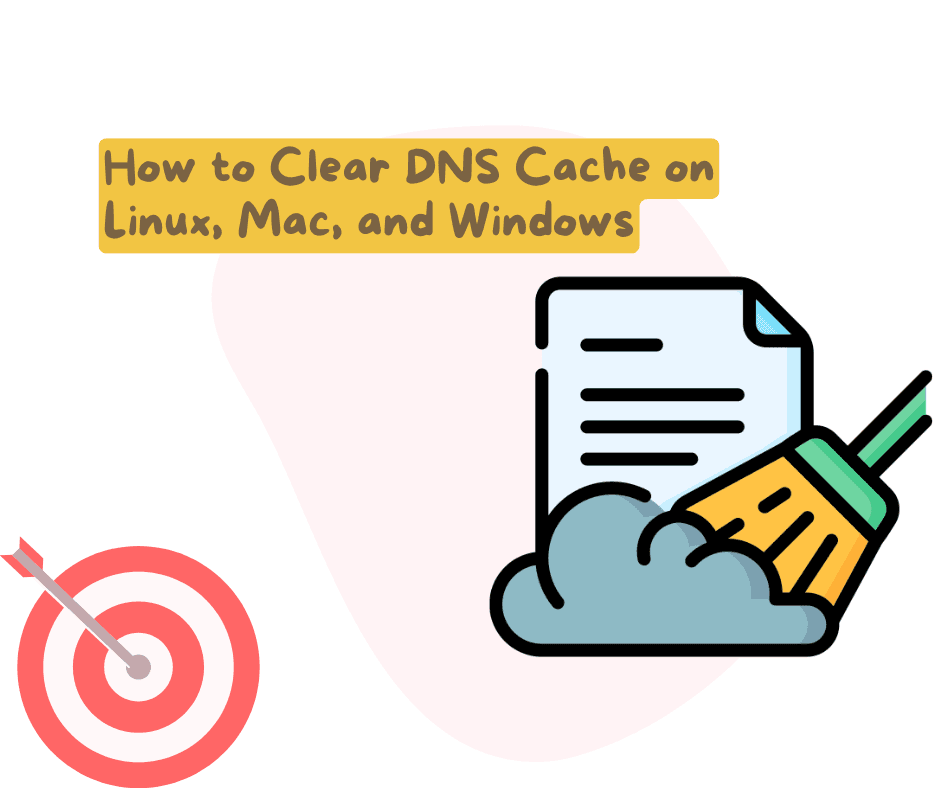How to Clear DNS Cache on Linux, Mac, and Windows

Posted by NetworkWhois on
DNS Cache Flushing: The Right Way on Every OS
Nothing wastes time like troubleshooting DNS issues with a stale cache. Here's exactly how to clear it on any system - and verify your records are actually correct afterward.
Pro Tip: Always verify DNS records after flushing cache using our DNS lookup tool to confirm you're getting fresh results.
Why You Need to Flush DNS
Your system caches DNS to speed up lookups, but this causes problems when:
- You've changed DNS records (A, MX, CNAME)
- Migrating servers or services
- Troubleshooting "can't reach site" errors
- Seeing outdated IP addresses
Clearing DNS Cache on Windows
Windows 10/11 (Command Prompt)
ipconfig /flushdns
Windows 7/8
ipconfig /flushdns
netsh int ip reset
netsh int ip reset
PowerShell (All Versions)
Clear-DnsClientCache
Flushing DNS on macOS
macOS Ventura (13+) and Later
sudo dscacheutil -flushcache
sudo killall -HUP mDNSResponder
sudo killall -HUP mDNSResponder
macOS Monterey (12) and Earlier
sudo killall -HUP mDNSResponder
For Legacy macOS (10.10 and below)
sudo discoveryutil mdnsflushcache
sudo discoveryutil udnsflushcaches
sudo discoveryutil udnsflushcaches
Linux DNS Cache Clearing
Systemd-Resolved (Ubuntu/Debian)
sudo systemd-resolve --flush-caches
sudo systemctl restart systemd-resolved
sudo systemctl restart systemd-resolved
NSCD (Name Service Cache Daemon)
sudo systemctl restart nscd
DNSMasq
sudo systemctl restart dnsmasq
No Cache? Check Live DNS
Many Linux distros don't cache by default. Verify with:
dig example.com | grep "Query time"
How to Verify Your DNS is Really Updated
After flushing cache:
- Check records with our DNS lookup tool
- Compare against your local results
- Test from multiple locations using different ISPs
Example: If you changed your A record, verify both the old and new IPs no longer appear anywhere.
When Flushing Isn't Enough
If you're still seeing stale records after clearing cache:
- Check TTL values with our DNS checker (high TTL = longer cache)
- Restart your browser (Chrome keeps its own DNS cache)
- Reboot your router (consumer gear often caches badly)
- Wait for propagation (up to 48 hours for global changes)
Advanced: Forcing Specific DNS Results
Sometimes you need to override cache entirely:
# Linux/macOS
dig @8.8.8.8 example.com
# Windows
nslookup example.com 8.8.8.8
dig @8.8.8.8 example.com
# Windows
nslookup example.com 8.8.8.8
This bypasses local cache and queries Google's DNS directly.
Security Note: After flushing cache, verify your DNS resolver hasn't been hijacked using our IP WHOIS tool to check for suspicious networks.
Automating DNS Cache Maintenance
For sysadmins managing multiple systems:
# Linux/macOS cron job (runs hourly)
0 * * * * /usr/bin/systemd-resolve --flush-caches
# Windows Scheduled Task
schtasks /create /tn "Flush DNS" /tr "ipconfig /flushdns" /sc hourly
Verify Your DNS Records Now
0 * * * * /usr/bin/systemd-resolve --flush-caches
# Windows Scheduled Task
schtasks /create /tn "Flush DNS" /tr "ipconfig /flushdns" /sc hourly
Remember: Cache is Both Friend and Foe
While this guide shows how to clear DNS cache, remember:
- Proper TTL settings prevent most cache issues
- Test changes with
dig/nslookupbefore blaming cache - When in doubt, check live DNS records first